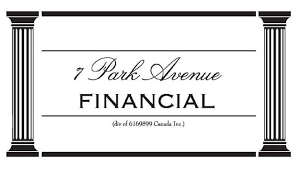|
Stop Losing Orders Due to Cash Flow Problems
Why Smart Businesses Choose PO Financing
YOUR COMPANY IS LOOKING FOR CANADIAN INVENTORY LOANS AND PURCHASE
ORDER FINANCING!
UPDATED 06/27/2025
You’ve arrived at the right address! Welcome to 7 Park Avenue Financial
Financing & Cash flow are the biggest issues facing business today
ARE YOU UNAWARE OR DISSATISFIED WITH YOUR CURRENT BUSINESS FINANCING OPTIONS?
CONTACT US
CALL NOW – DIRECT LINE – 416 319 5769 – Let’s talk or arrange a meeting to discuss your needs
EMAIL – sprokop@7parkavenuefinancial.com

PURCHASE ORDER FINANCING
Inventory loans in Canada and inventory and purchase order financing are subsets of a specialized industry that many refer to as asset-based lending.
From Order Opportunity to Cash Flow Crisis
You've secured the purchase order of your dreams, but your bank account tells a different story.
Traditional lenders won't budge, suppliers demand payment upfront, and your biggest opportunity becomes your biggest headache.
Let the 7 Park Avenue Financial team show you how Purchase order financing transforms this nightmare into your next success story by providing the capital you need exactly when you need it.
Growing Challenges in Inventory and Purchase Order Financing
As sales and new order opportunities grow, many Canadian business owners and financial managers find that financing these two critical areas (inventory/P.O.s) has increasingly become a challenge.
We advise clients that if these two critical areas of finance were a challenge in past times, that challenge is certainly magnified ten times over in the current global and Canadian business environment.
Limited but Available Solutions
Are there specific solutions for inventory and purchase order financing in Canada? Yes, there are—that's the good news—
But these are very limited and specialized in nature. We encourage all clients to speak to a trusted, credible, and experienced business financing advisor in this area who can provide guidance, assistance, and most importantly, clarification on how this type of financing is achieved.
Beyond Traditional Banking Solutions
Inventory and purchase order financing in Canada extends beyond traditional Canadian chartered banks, who wrestle with the ability to truly understand a customer's inventory component as a key part of working capital.
(Working capital is derived from the continual conversion of inventory into accounts receivable.)
Requirements for Purchase Order Financing
Purchase order financing can be accomplished when your firm has the ability to generate sufficient orders from a major client, or clients, who are creditworthy.
You must also be prepared to convince the inventory and P.O. finance firm that your company has the ability to fulfill customer orders successfully.
Start-ups in Canada can achieve inventory and P.O. financing, but be forewarned that management must have a strong background in the industry—you have to demonstrate you can perform and deliver.
How the Financing Process Works
The financing of inventory and purchase orders is achieved via direct payment or payments made to your suppliers for products you need in order to fulfill orders and contracts.
For Canadian customers, this more and more means that key suppliers may well be located in the U.S., and in many cases, China.
This does not deter the inventory and P.O. lender, but you must be in a position to show that you have sufficient gross margin (i.e., profit!) in your business model in order to be able to withstand the additional financing charges that come with inventory and P.O. finance.
Payment Structure and Banking Requirements
Also, unbeknownst to many business owners, the inventory and P.O. finance firm likes to generally get paid when an invoice to your customer is generated by your company. This requires that you have a banking or invoice factoring facility in place to convert receivables into cash, in order that the inventory and P.O. lenders can be paid.
Understanding the Total Costs
We encourage all customers to take some time and understand the total costs of such a facility—
You need to remember that your firm will bear financing costs for, often, between 60-90 days from the time you get an order, obtain product from your supplier, manufacture and/or ship the order, and, last but not least, wait to get paid! Inventory and P.O. financing can be expensive, but naturally the alternative to avoiding this type of financing means simply lost orders, opportunities, customers, etc.
No Canadian firm chooses to become less competitive by virtue of not wanting to incur finance charges to convert new sales into profits.
Case Study
Manufacturing Success: From Struggle to Scale
A Toronto-based electronics manufacturer faced their biggest challenge when a major retailer placed a $250,000 order—their largest ever.
Traditional banks required extensive collateral and a 6-week approval process they couldn't afford.
Within 7 days of applying for PO financing, they received approval and funding.
The financing company paid suppliers directly, ensuring on-time delivery. The manufacturer fulfilled the order successfully, strengthened their customer relationship, and secured three additional orders worth $500,000 over the following quarter.
The PO financing cost represented just 2.8% of their gross profit, but the relationship benefits and growth momentum proved invaluable.
They've since used PO financing for 12 additional orders, scaling their business by 200% in 18 months.
CONCLUSION -TAKE ACTION WITH PO FINANCE
Call 7 Park Avenue Financial, an inventory and finance expert—understand the basic paper flow and the charges involved in this unique method of business financing. Turn inventory and purchase order and new contract challenges into increased revenue and profits to promote your competitive edge.
FAQ / FREQUENTLY ASKED QUESTIONS
What types of businesses qualify for PO financing? PO financing works best for businesses with confirmed purchase orders from creditworthy customers, typically in manufacturing, distribution, import/export, and wholesale industries where there's a clear fulfillment process.
How quickly can I access PO financing funds? PO financing can be approved and funded within 5-10 business days once you provide the purchase order, supplier quotes, and customer credit information—much faster than traditional bank loans. A traditional financial institution such as a bank does not offer PO financing to fund purchase order.
What costs are involved in PO financing? PO financing typically costs 2-4% per month of the financed amount, which may seem high but becomes cost-effective when you calculate the profit margin on orders you couldn't otherwise fulfill. Borrowers pay interest on only funds drawn down.
Do I need collateral for PO financing? PO financing is secured by the purchase order itself and the resulting receivable, so you don't need traditional collateral like real estate or equipment—the order is your security.
What size purchase orders can be financed? PO financing can handle orders from $10,000 to several million dollars, making it scalable for businesses at various growth stages.
How does purchase order financing work for small businesses?
PO financing provides upfront capital to fulfill confirmed orders by paying your suppliers directly, then collecting payment when your customer pays.
What documents do I need for purchase order financing approval?
PO financing requires your purchase order, supplier invoices, customer credit information, and basic business documentation to process your application.
When should a business consider using purchase order financing?
PO financing makes sense when you have profitable orders but lack working capital, need to fulfill seasonal demand, or want to accept larger contracts.
Where can Canadian businesses find reliable PO financing providers?
PO financing is available through specialized lenders, alternative finance companies, and some commercial banks that understand this niche financing solution.
Why do businesses choose PO financing over traditional bank loans?
PO financing offers faster approval, doesn't require extensive collateral, and bases decisions on order strength rather than just credit history.
Who typically uses purchase order financing most successfully?
PO financing works best for distributors, manufacturers, importers, and wholesalers with confirmed orders from established customers.
What industries benefit most from purchase order financing? PO financing serves manufacturing, distribution, textiles, electronics, food service, and any industry with clear supplier-to-customer fulfillment cycles.
Which customers make the best candidates for PO financing?
PO financing works when your customers are creditworthy businesses or government entities with strong payment histories and established reputations.
How much does purchase order financing cost compared to other options?
PO financing costs more than traditional loans but less than missing profitable opportunities or losing customers due to fulfillment delays.
What happens if my customer doesn't pay after using PO financing?
PO financing providers typically offer recourse and non-recourse options, with non-recourse protecting you from customer payment defaults for a higher fee.
How does PO financing accelerate business growth?
PO financing accelerates growth by removing cash flow constraints, allowing you to accept larger orders and build stronger customer relationships through reliable fulfillment.
What competitive advantages does PO financing provide?
PO financing gives you competitive advantages by enabling you to quote on larger projects, maintain consistent inventory levels, and respond quickly to market opportunities.
How does PO financing improve cash flow management?
PO financing improves cash flow by providing immediate working capital while preserving your existing credit lines for other business needs and emergencies.
What risks does PO financing help businesses avoid? PO financing helps avoid the risks of missing growth opportunities, disappointing customers, damaging supplier relationships, and losing market share to better-capitalized competitors.
How does PO financing support seasonal business fluctuations?
PO financing supports seasonal businesses by providing capital during peak demand periods without requiring year-round debt service or collateral commitments.
Is purchase order financing the same as factoring?
PO financing is different from factoring because it provides upfront capital before you fulfill the order, while factoring advances money against existing invoices after delivery.
Can startups use purchase order financing?
PO financing can work for startups if they have confirmed orders from creditworthy customers, even with limited business credit history or operating experience around their ability to finance supplier costs.
How is PO financing different from a business line of credit?
PO financing is transaction-specific and doesn't require monthly payments or ongoing credit facility maintenance like traditional lines of credit or a bank line.
What happens to my customer relationships with PO financing?
PO financing typically remains invisible to your customers since the lender works behind the scenes, allowing you to maintain direct customer relationships.
Are there alternatives to purchase order financing?
PO financing alternatives include factoring, asset-based lending, merchant cash advances, and traditional bank loans, but each has different qualification requirements and use cases.
What makes a purchase order suitable for financing?
PO financing works best with purchase orders from creditworthy customers, clear delivery terms, reasonable profit margins, and reliable suppliers who can fulfill the requirements.
How do PO financing companies evaluate applications?
PO financing companies evaluate your customer's creditworthiness, order profitability, supplier reliability, your fulfillment capability, and the overall transaction structure.
What ongoing responsibilities do businesses have with PO financing?
PO financing requires you to maintain communication with the lender, provide delivery confirmations, submit invoices promptly, and ensure customer payments are directed correctly.
Citations
- Business Development Bank of Canada (BDC) - "Alternative Financing Options for Canadian SMEs" - https://www.bdc.ca
- Export Development Canada (EDC) - "Trade Finance Solutions for Growing Businesses" - https://www.edc.ca
- Canadian Federation of Independent Business (CFIB) - "Small Business Cash Flow Challenges Survey" - https://www.cfib-fcei.ca
- Statistics Canada - "Business Financing Patterns in Canada" - https://www.statcan.gc.ca
- International Trade Centre - "Global Trade Finance Gap Analysis" - https://www.intracen.org
- Canadian Bankers Association - "Commercial Lending Trends Report" - https://www.cba.ca
- 7 Park Avenue Financial -" From Orders to Cash: How Elite P O Financing Transforms Business"- https://www.7parkavenuefinancial.com/purchase-order-financing-p-o-finance.html

' Canadian Business Financing With The Intelligent Use Of Experience '
STAN PROKOP
7 Park Avenue Financial/Copyright/2025

ABOUT THE AUTHOR: Stan Prokop is the founder of 7 Park Avenue Financial and a recognized expert on Canadian Business Financing. Since 2004 Stan has helped hundreds of small, medium and large organizations achieve the financing they need to survive and grow. He has decades of credit and lending experience working for firms such as Hewlett Packard / Cable & Wireless / Ashland Oil
|